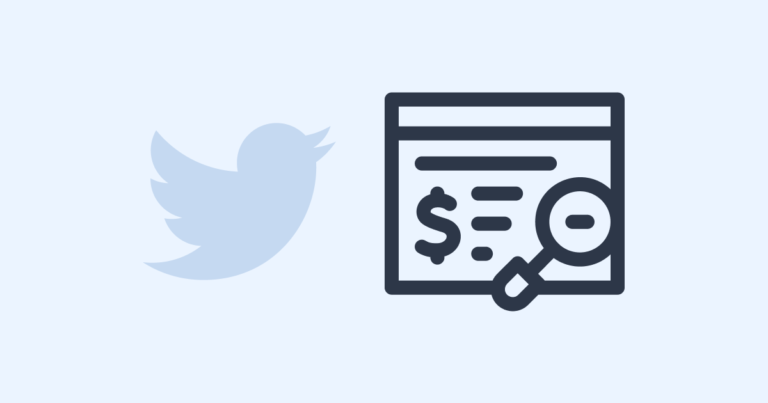RLSAs allow you to bid on broad keywords but only for a specific audience that’s already familiar with your brand, therefore increasing the likelihood of a conversion outcome.
Why it’s a good idea
RLSAs (retargeting lists for search ads) are a type of retargeting on Google Ads that enables you to bid on keywords but only for a specific audience.
If you sell prescription sunglasses, you would probably find it difficult to bid on a generic keyword like [sunglasses] with a decent ROAS (return on ad spend), since only a particular sliver of that audience would be a good fit for your product.
However, you’d be much more likely to have success if you had some way to only show ads to people who need prescription sunglasses when they searched for [sunglasses].
This provides an edge for two reasons:
We’re able to be more specific in our ad copy than competitors. The user is already going to be familiar with our brand, and us with the characteristics of that user. That’s what RLSAs do. You provide the list, and Google will show your ads to those people on any query you want.
This pattern is valuable because many users lack specificity when performing queries on Google. To continue the above example, a user who ultimately wants to purchase prescription sunglasses may begin by searching [sunglasses] and then trying to filter down to prescription upon arriving at a site. This method allows us to get ahead of that and be more direct.
🌟 This Guide is Part of a Series of Marketing Patterns
For more free and ready to use marketing strategies just like this one, view the full marketing patterns library.
Strategy Analysis
Getting in front of customers
The first step is creating and populating an audience for Google Ads to run against. The easiest way to do this is either by using the Google Ads retargeting tag, or by defining a Google Analytics audience.
The most popular method to populate the audience is to run social ads (Twitter, or Facebook) using an ad that self-qualifies people.
To continue with the prescription sunglasses theme from above, we might run an ad on Twitter that says “25 things only people who wear glasses know”.
The ultimate goal is to be able to run ads for a generic term that is related to your product.
To complete the illustration:
- Create a piece of content that speaks to a subset of a broader audience.
- Run it on a broad network and let the self-selection process do its thing.
- Capture the audience w/ Google Ads/Google Analytics.
- Create generic keyword campaigns.
Positioning and Messaging
For a retailer or a DTC brand, this concept is pretty straightforward.
What’s non-obvious is that it may also make sense for affiliate sites.
To understand why let’s talk about bias.
This concept trades under many names — some call it influence, others call it brand power. I’m calling it bias.
It helps to have a clear visualization of the concept. Let’s look at a few examples.
Certain people will pay a premium to buy something from Amazon, even if it’s widely available. What’s more, when the same brand operates a DTC site with 2-day free shipping (which is probably FBA on the back end) people will still opt for Amazon. Even though this is the same offer, same value prop, Amazon will often capture that sale. So it’s not about the product. It’s about some bias they have towards Amazon.
On the flipside, some people won’t shop at Walmart. They wouldn’t be caught dead in the store, even if it’s the only place to get a great price on the exact product they want. They’ll force themselves into a sub-optimal buying experience because they are biased against Walmart.
So we can be sure then, that bias has some impact on the buying process.
Next, let’s look at a couple of popular, trusted review brands. Anyone who has done keyword research on “best product” lists knows that you get a lot of brands mentioned alongside the queries:
- best microwaves consumer reports
- best smart tv thewirecutter
- best smart tv cnet
- best smartphone reddit
These brands typically make a space for themselves and build a little bias within it. You don’t see Consumer Reports showing up on “best attorney for …” queries, but for the products that they cover frequently, it’s a good bet that you’ll see query volume.
One has to assume that these brands have some level of trust with many more consumers than the ones that directly type in their name after a product query. If they get affiliate payouts, it seems to me like they’d benefit from running an RLSA on generic queries where they have some bias built and content available.
Influencer marketing is another channel that generates biased queries (navigational queries in Google parlance). Advertisers offer many podcasts coupon codes for attribution — you’ll see queries like [person name + audible code] or [podcast name + product]
Not only does this illustrate that audiences can become biased towards the brand (person or podcast or whatever) offering the discount, but also towards the product itself because of the affiliation with that person. They’re more likely to buy something because someone they have a bias towards mentioned it, and they’re more likely to use their discount even if others are widely available.
These are all ideas presented to get you thinking about potential ways to leverage the RLSA strategies.
Budget Considerations
The downsides of an RLSA come in the form of budgetary issues.
It can be expensive to kick off a new social ad campaign until the platform is able to optimize for clicks. You’ll likely need to test several variations of ad copy, targeting, and creatives until you find a great cost-per-click, which is the primary metric on the front end.
The other downside is that there is often no immediate return. Audiences need to be populated before they can be targeted, so there will always be a delay from initial click -> join audience -> show retargeting ad.
Additionally, not all members of the audience will ever search for your broad keyword targets. This is helpful for the second phase Google Ads budget, but also the reason why the initial goal is to achieve the lowest cpc possible from your social campaigns.
The good news is that in our experience, the conversions that do come through this pattern tend to be some of the lowest cost overall in an entire Google Ads account.
Tech and Tools
You’ll need a Google Ads account, and it is highly recommended that you utilize a Google Analytics account to maintain the audience. Both can be deployed through Google Tag Manager.
Real World Examples
It’s nearly impossible to determine if this pattern is being executed by a retailer or not, so unfortunately no real world examples can be shown.
If we do find one, (or perhaps the next time we create one) we’ll post it here.

